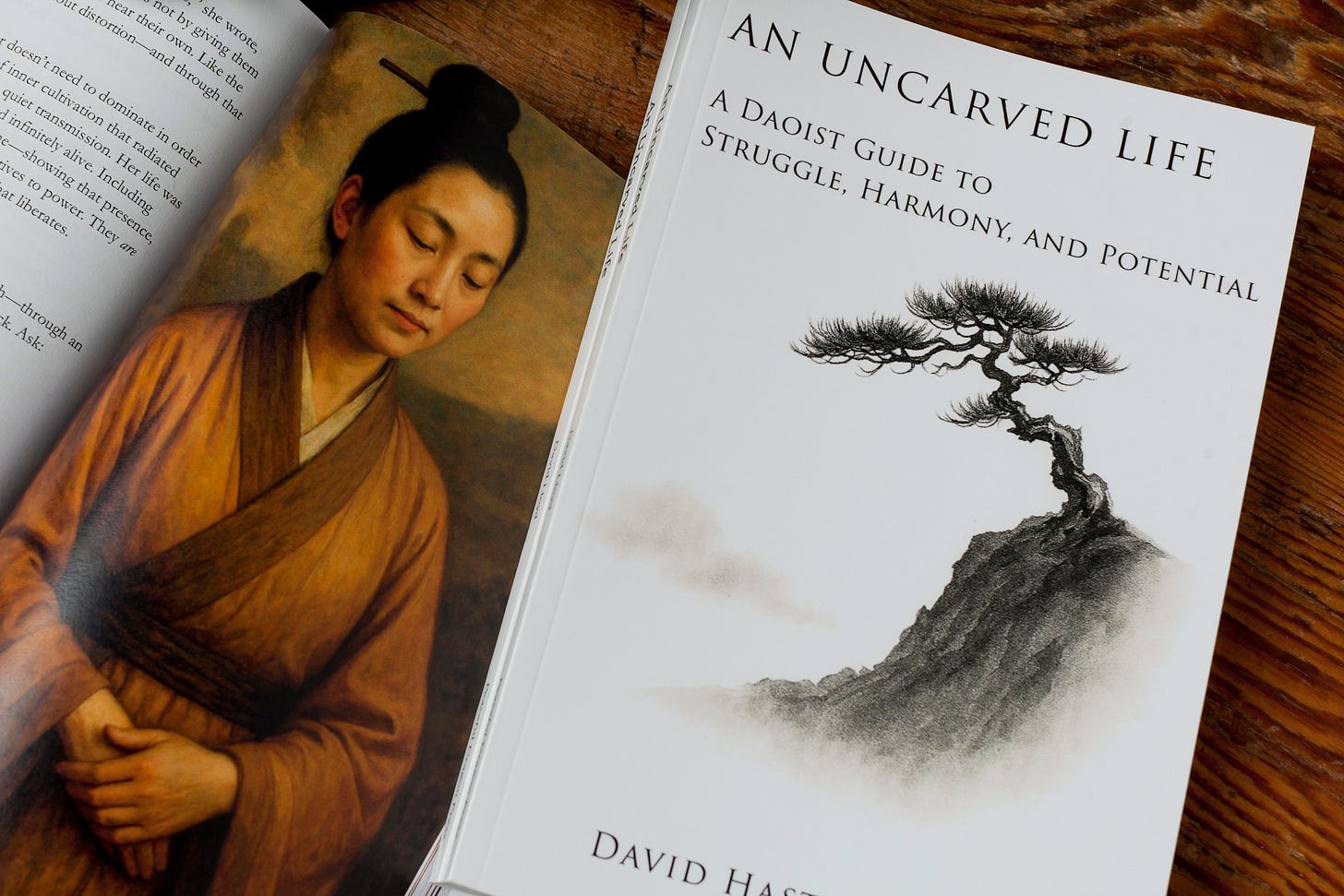Peer-Reviewed Research: Moving Toward Healing
How Tai Chi and Qigong Support Cancer Recovery
In the world of modern oncology, some of the most promising advances are not found in a laboratory or a hospital ward but in the gentle, flowing movements of ancient Chinese exercises. A new review published in Open Scope Publications(2025) by researcher Robert W. McGee brings these worlds together, showing how Tai Chi and Qigong—centuries-old mind-body practices—can improve the lives of people recovering from cancer, particularly breast, lung, and colorectal cancers.
Ancient Roots, Modern Relevance
Tai Chi, or Taijiquan, began as a martial art in seventeenth-century China, evolving from the movements of Chen Village in Henan Province. Once practiced for self-defense and spiritual cultivation, it has since become a slow, meditative exercise performed by millions worldwide. In 2020, UNESCO listed Tai Chi as an Intangible Cultural Heritage of Humanity.
Qigong, its older cousin, reaches back more than two thousand years. It combines breathing, gentle motion, and mental focus to cultivate qi—the body’s vital energy. Early Qigong traditions blended ideas from medicine, Confucian ethics, Daoist philosophy, Buddhist meditation, and martial discipline. Modern China standardized Qigong for public health in 1949, leading to widespread practice across all ages.
Although Tai Chi and Qigong developed in temples and courtyards, McGee emphasizes that “these practices have entered the medical mainstream because they are safe, adaptable, and evidence-based.” Over the past few decades, clinical research has shown that they improve balance, cardiovascular health, mood, sleep, and immune function.
Why Study Them in Cancer Care?
Cancer treatment—surgery, chemotherapy, radiation—can leave survivors exhausted, anxious, and struggling with lingering side effects. Fatigue, pain, insomnia, depression, and decreased physical function are common obstacles to recovery. McGee’s review asked a simple but profound question: Can the ancient movements of Tai Chi and Qigong help ease these burdens?
To answer it, he searched the PubMed database for recent studies on these practices in cancer patients and used an artificial-intelligence tool (Grok 4) to summarize and cross-check the findings. The review ultimately examined 15 clinical studies, including randomized controlled trials (RCTs), meta-analyses, and observational research. Together, these investigations covered hundreds of participants across Asia, Europe, and North America.
What the Studies Found
Across cancers, the results were remarkably consistent: Tai Chi and Qigong improved both physical and psychological outcomes.
1. Breast Cancer
Women recovering from breast cancer were the most studied group. A 2024 meta-analysis of 16 RCTs involving 1,247 patients found that Tai Chi and Baduanjin Qigong significantly improved cognitive function, shoulder mobility, sleep quality, and overall quality of life while reducing anxiety, depression, and fatigue. Benefits were strongest when programs lasted more than eight weeks.
A separate meta-analysis confirmed similar effects: better mood, less fatigue, and improved daily functioning. Short-term pilot trials also showed tangible physiological changes. One small study reported that a single session of internal Qigong reduced swelling (lymphedema) and improved blood flow in the arms of breast-cancer survivors. Another found that regular practice enhanced balance confidence and postural control.
Beyond physical recovery, the emotional healing was equally notable. A nurse-led Mindfulness-Based Tai Chi Chuanprogram helped participants experience post-traumatic growth—a sense of positive psychological change after hardship—while lowering stress and anxiety. In another clinical trial, Tai Chi improved sleep and reduced inflammatory markers, performing as well as cognitive-behavioral therapy, the gold-standard psychological treatment for insomnia.
2. Lung Cancer
For people recovering from lung surgery, breathing capacity and activity tolerance are critical. A 2025 meta-analysis of nine RCTs with 795 patients found that the Baduanjin form of Qigong significantly improved lung function—including measures such as forced expiratory volume (FEV1) and vital capacity (FVC)—while reducing anxiety and depression. No adverse events were reported.
3. Colorectal Cancer
Patients undergoing chemotherapy for colorectal cancer who practiced Baduanjin experienced less cancer-related fatigue, better sleep, and higher performance scores after 24 weeks. This suggests that gentle movement and breath control may counteract the exhaustion and deconditioning that often accompany treatment.
4. Mixed-Cancer Groups
Other studies involving mixed cancer types—including breast, lung, and gastrointestinal—showed that medical Qigong improved cognitive function and reduced inflammation, as indicated by lower C-reactive protein levels. Even video-based Qigong programs delivered online reduced depression, anxiety, and fatigue for patients who could not attend in-person classes.
How Might It Work?
While Western medicine and Traditional Chinese Medicine describe the process differently, their insights are increasingly converging.
Physiologically, slow rhythmic movements with coordinated breathing enhance circulation and oxygenation, stimulate the lymphatic system, and promote autonomic balance—shifting the nervous system from the stress-driven “fight-or-flight” mode toward the restorative “rest-and-digest” state.
Biochemically, studies show reduced inflammatory markers such as C-reactive protein and pro-inflammatory gene expression after Tai Chi practice.
Psychologically, mindfulness and body awareness cultivated through movement reduce rumination and anxiety, leading to measurable improvements in mood and sleep.
From a TCM perspective, the exercises restore the smooth flow of qi and blood throughout the meridians, harmonizing the organs and emotions. Whether explained as neuroendocrine regulation or energy balancing, both frameworks describe a system returning to equilibrium.
What Makes Tai Chi and Qigong Unique
Unlike many exercise regimens, these arts are non-competitive, low-impact, and adaptable to all ages and physical abilities. Movements can be performed sitting or standing, and there is no need for special equipment. That accessibility is crucial for cancer survivors who may struggle with fatigue or limited mobility.
One participant in a cited trial described Tai Chi as “exercise that feels like meditation.” This phrase captures its essence: movement infused with awareness. The combination of gentle motion, deep breathing, and focused attention activates multiple healing pathways—muscular, immune, emotional, and cognitive—simultaneously.
Limitations and Future Directions
McGee notes that while the evidence is encouraging, it is not yet definitive. Many of the reviewed studies had small sample sizes, varied training durations, or methodological weaknesses such as lack of blinding. Moreover, most trials were conducted in East Asia, so results may not generalize across cultures and healthcare systems.
Nonetheless, the overall picture is positive. No serious side effects were reported, and adherence rates were high—suggesting that people not only benefit from the practices but genuinely enjoy them. The review calls for larger, high-quality RCTs that standardize routines, measure biological markers, and explore long-term outcomes like recurrence rates and survival.
Bringing Movement Into Medicine
The integration of mind-body therapies into oncology clinics reflects a broader shift in healthcare. Instead of viewing the body as a machine to be repaired, many practitioners now emphasize whole-person healing—addressing mind, emotions, and community alongside physical disease. Hospitals across China, Europe, and the U.S. have begun offering Tai Chi or Qigong classes for patients undergoing chemotherapy or rehabilitation.
McGee highlights that artificial intelligence (AI) itself played a role in producing his review—used to summarize large volumes of data quickly. In an ironic twist, the same technology transforming high-tech medicine helped compile evidence for ancient healing arts. The convergence of AI and mindfulness may seem unlikely, but both aim to bring clarity and efficiency—whether to algorithms or to the human spirit.
A Safe, Empowering Adjunct
One of the clearest messages from this body of research is safety. Across all trials, no adverse events were reported. For many patients, that reassurance matters. Tai Chi and Qigong require no medication, impose minimal physical strain, and offer a sense of agency in recovery—something often lost during medical treatment.
Participants frequently describe improvements beyond what statistics can capture: feeling calmer, sleeping better, reconnecting with their bodies, and finding community among fellow practitioners. These qualitative outcomes—hope, confidence, inner peace—may be just as vital as measurable physiological changes.
Integrating East and West
The review concludes that Tai Chi and Qigong “offer safe, non-pharmacological adjuncts to conventional cancer care, promoting holistic recovery.” They complement, rather than replace, medical treatment. For clinicians, this means recognizing the value of combining modern interventions with time-tested mind-body practices. For patients, it means reclaiming an active role in healing.
In the end, the science supports what practitioners have long believed: when movement, breath, and intention align, the body’s innate capacity to heal awakens.
Reference
McGee, R. W. (2025). From Ancient Practices to Modern Oncology: Health Benefits of Tai Chi and Qigong for Breast, Lung, and Colorectal Cancer Patients. Open Scope Publications, 2(1), 36–54
.
Like what you read? Keep exploring…
If this post resonated with you, you’ll love my book:
An Uncarved Life: A Daoist Guide to Struggle, Harmony, and Potential
This book blends timeless Daoist wisdom with real-world insight into how we can navigate struggle, cultivate inner peace, and live in alignment with our deeper potential. Drawing from classical texts like the Dao De Jing and integrating modern psychology and neuroscience, An Uncarved Life offers a grounded, poetic, and deeply personal guide to living well in a chaotic world.
Whether you’re seeking clarity, calm, or a more meaningful path forward, this book is a companion for anyone who wants to walk the Way with sincerity and strength.
Available now in print, Kindle, and audiobook formats.
Click here to get your copy on Amazon



